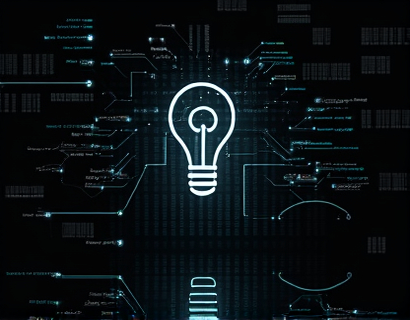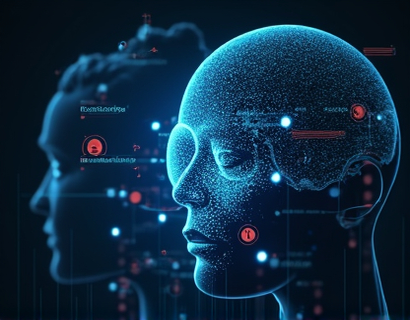AI-Powered Conflict Navigator: Unlocking Strategic Insights for Adversarial Challenges
The landscape of conflict resolution is undergoing a transformative shift with the advent of AI-powered tools designed to navigate and resolve adversarial situations. These advanced virtual platforms leverage the power of artificial intelligence to provide personalized strategies and insights, empowering users to tackle complex challenges with confidence and effectiveness. This article delves into the capabilities and benefits of such AI-driven solutions, exploring how they can revolutionize both personal and professional conflict resolution.
Understanding the Role of AI in Conflict Resolution
Artificial intelligence has the potential to significantly enhance conflict resolution by analyzing vast amounts of data, identifying patterns, and offering tailored solutions. Unlike traditional methods that rely on human intuition and experience, AI can process information at a speed and scale unmatched by humans. This capability allows for more accurate and timely interventions, making AI a valuable asset in navigating adversarial situations.
The core of AI-powered conflict resolution lies in its ability to understand the nuances of human behavior and interaction. By incorporating machine learning algorithms, these platforms can adapt to new data and improve over time, ensuring that the strategies provided remain relevant and effective. This continuous learning process is crucial in the dynamic environment of conflict resolution, where situations can evolve rapidly.
Personalized Strategies for Effective Resolution
One of the most significant advantages of AI-powered conflict navigation tools is their ability to offer personalized strategies. Each conflict is unique, with its own set of circumstances, stakeholders, and underlying issues. An AI system can analyze the specific context of a conflict, taking into account the histories, motivations, and preferences of all parties involved. This level of customization ensures that the solutions proposed are not only effective but also aligned with the values and goals of the individuals or organizations involved.
For instance, in a professional setting, an AI might identify that a conflict between team members is rooted in differing work styles and communication preferences. The system could then suggest a mediation approach that focuses on improving communication channels and establishing clear expectations. In a personal context, the AI might recommend conflict resolution techniques based on the emotional triggers and past experiences of the individuals involved.
Real-Time Analysis and Adaptation
AI-powered conflict navigation tools excel in real-time analysis and adaptation. As conflicts unfold, new information and dynamics can emerge, requiring adjustments to the resolution strategy. Traditional methods often struggle to keep pace with these changes, leading to less effective outcomes. In contrast, AI systems can continuously monitor the situation, incorporating new data and feedback to refine and update the resolution approach in real-time.
This dynamic adaptability is particularly valuable in high-stakes environments such as business negotiations, diplomatic relations, and crisis management. By providing up-to-date insights and adjusting strategies on the fly, AI can help users stay one step ahead of potential complications and achieve more favorable outcomes.
Enhancing Decision-Making with Data-Driven Insights
Data-driven insights are a cornerstone of AI-powered conflict resolution. These tools can analyze historical data, current trends, and real-time information to provide a comprehensive view of the conflict. This data can include factors such as past conflict resolutions, stakeholder behaviors, and external influences. By leveraging this wealth of information, AI can help users make more informed decisions, reducing the risk of costly mistakes and increasing the likelihood of successful resolution.
For example, in a business dispute, an AI system might analyze previous negotiations, market trends, and the competitive landscape to identify the most effective negotiation tactics. It could also assess the strengths and weaknesses of each party, suggesting strategies to leverage these advantages. In a personal conflict, the AI might review communication patterns and emotional responses to propose interventions that address the root causes of the issue.
Facilitating Effective Communication
Effective communication is a critical component of conflict resolution. AI-powered tools can play a significant role in enhancing communication by providing structured frameworks and guidelines. These platforms can offer suggestions for framing messages, active listening techniques, and strategies for managing emotions during discussions. By guiding users through the communication process, AI can help prevent misunderstandings and foster a more constructive dialogue.
Moreover, AI can facilitate communication across language and cultural barriers. Translation and cultural sensitivity features can ensure that messages are accurately conveyed and received, reducing the potential for misinterpretation. This is particularly beneficial in international business and diplomatic contexts, where language and cultural differences can significantly impact the resolution process.
Building Trust Through Transparency
Trust is essential in any conflict resolution process. AI-powered tools can enhance trust by providing transparent and explainable recommendations. Unlike black-box algorithms, these systems can outline the reasoning behind their suggestions, allowing users to understand the basis for the proposed strategies. This transparency not only builds confidence in the AI's capabilities but also empowers users to make informed decisions.
Additionally, AI can help maintain confidentiality and privacy, which are often critical concerns in conflict situations. By handling sensitive data securely and ensuring that communications remain private, AI tools can create a safe space for open and honest dialogue.
Case Studies and Real-World Applications
To illustrate the practical applications of AI-powered conflict navigation, consider a few real-world scenarios. In a corporate environment, a team is facing a significant disagreement over project direction. An AI system is deployed to analyze the team's communication history, project goals, and individual preferences. The AI identifies that the conflict stems from differing visions and suggests a facilitated workshop where each team member can present their perspective. It also proposes a compromise solution that incorporates elements from all viewpoints, fostering a collaborative approach to decision-making.
In a diplomatic context, AI can assist in managing tensions between nations. By analyzing historical relations, current events, and public sentiment, the AI can recommend a series of diplomatic engagements designed to build trust and find common ground. For example, it might suggest a joint cultural exchange program or a collaborative research project to address shared concerns.
Challenges and Considerations
While AI-powered conflict navigation tools offer numerous benefits, there are also challenges and considerations to keep in mind. One key issue is the potential for bias in AI algorithms. If the data used to train these systems is biased, the recommendations generated can perpetuate existing inequalities. Therefore, it is crucial to ensure that the data sets are diverse and representative, and that the AI systems are regularly audited for fairness and accuracy.
Another consideration is the need for human oversight. While AI can provide valuable insights and suggestions, the final decisions should always involve human judgment. AI should be seen as a tool to augment human capabilities, not replace them. Users must remain engaged and critical, using the AI's recommendations as a starting point for further analysis and discussion.
Future Prospects and Innovations
The future of AI-powered conflict resolution is promising, with ongoing advancements in machine learning, natural language processing, and data analytics. As these technologies continue to evolve, AI tools will become even more sophisticated, offering deeper insights and more nuanced strategies. The integration of emotional intelligence and social understanding will further enhance the effectiveness of these platforms, making them even more adept at handling complex human interactions.
Additionally, the development of multi-modal AI systems that can process and respond to various forms of input, such as text, voice, and visual data, will expand the range of applications. This could lead to more intuitive and user-friendly interfaces, making AI-powered conflict resolution accessible to a broader audience.
Conclusion
AI-powered conflict navigation tools represent a significant leap forward in the field of conflict resolution. By providing personalized strategies, real-time analysis, and data-driven insights, these platforms empower users to navigate adversarial challenges with greater confidence and effectiveness. As the technology continues to advance, the potential for positive impact in both personal and professional contexts is immense. Embracing these innovations can lead to more harmonious and productive outcomes, transforming the way we approach and resolve conflicts.











































